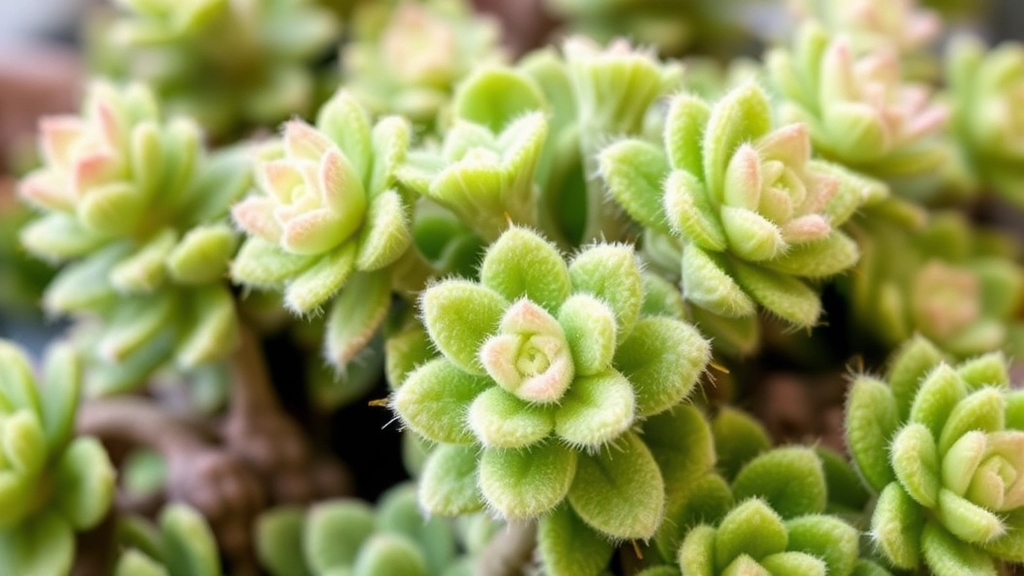Propagating Fuzzy Kalanchoe
Are you a plant enthusiast looking to expand your collection of fuzzy Kalanchoe? Propagating these charming succulents, like Kalanchoe tomentosa (Panda Plant) or Kalanchoe beharensis (Elephant Ear), can be a rewarding experience. Whether you’re a beginner or an experienced gardener, this guide will walk you through simple, effective methods to propagate your fuzzy Kalanchoe successfully.
From stem cuttings to leaf propagation and offsets, we’ve got you covered with easy-to-follow steps. You’ll also find tips on choosing the right variety, gathering the necessary tools, and caring for your plants post-propagation. Let’s dive into the world of fuzzy Kalanchoe propagation and watch your succulent family grow!
1. Stem Cuttings
- Overview: One of the most popular methods, stem cuttings allow for quick propagation.
- Benefits: This method is straightforward and yields fast results. For more detailed guidance, you can refer to the step-by-step guide on propagating Kalanchoe from leaves.
2. Offsets
- Overview: Offsets, or âpups,â are small plants that grow at the base of the parent plant.
- Benefits: This method is less invasive and ensures genetic consistency. Learn more about the care and propagation of Kalanchoe offsets.
3. Leaf Cuttings
- Overview: Using individual leaves can also successfully propagate Fuzzy Kalanchoe.
- Benefits: This method is ideal for those looking to expand their collection without taking too much from the parent plant.
Each of these methods has its own charm and effectiveness, depending on your preferences and available resources.
Choosing the Right Kalanchoe Variety for Propagation
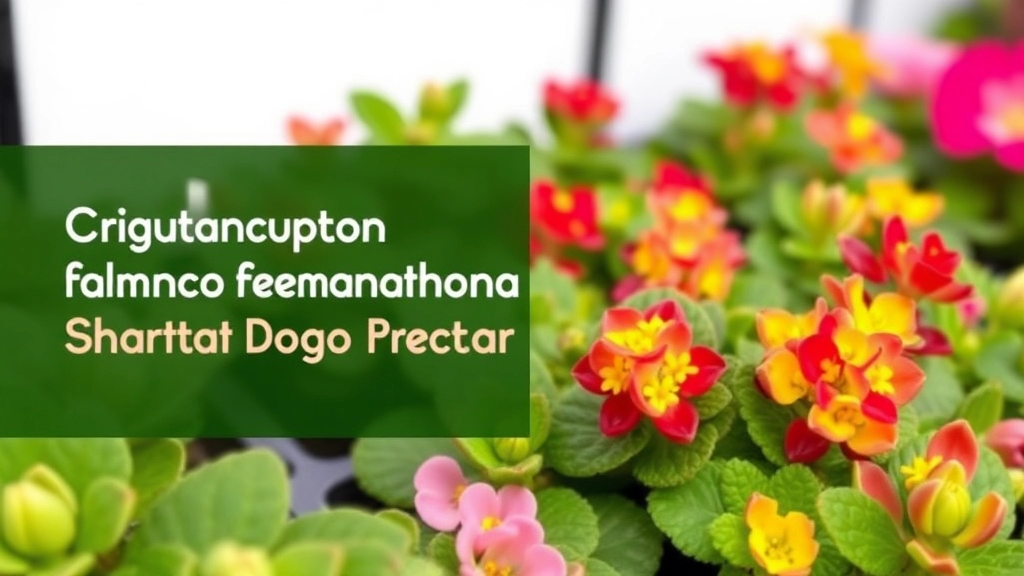
So, you’re eager to dive into propagating your fuzzy Kalanchoe, but have you thought about which variety to choose?
Not all Kalanchoes are created equal, and picking the right one can make all the difference in your propagation journey.
Here are some popular varieties to consider:
- Kalanchoe tomentosa: This is the classic fuzzy Kalanchoe, known for its soft, velvety leaves and charming appearance.
- Kalanchoe blossfeldiana: A vibrant choice with stunning flowers that can add a pop of colour to your home.
- Kalanchoe luciae: Also known as the paddle plant, this one has striking, thick leaves that can be a real showstopper.
When selecting a variety, think about:
- Growth habits: Some varieties grow taller while others remain compact.
- Flowering potential: If you want blooms, look for varieties that are known for their flowers.
- Leaf texture and colour: The fuzzy texture of the leaves can vary, so choose one that appeals to your aesthetic.
Remember, the variety you choose can affect not just how it looks but also how easy it is to propagate and care for.
As you embark on your journey to propagate fuzzy Kalanchoe, having the right tools and supplies is essential for success. It’s not just about the plants; it’s about making the process smooth and enjoyable.
### Essential Tools and Supplies
– **Sharp, Clean Scissors or Pruning Shears**
– A clean cut is crucial to prevent damage and disease. Ensure your tools are sterilised before use.
– **Small Pots or Containers**
– Choose pots with drainage holes to prevent waterlogging. Terracotta or plastic works well.
– **Well-Draining Soil Mix**
– A cactus or succulent mix is ideal, providing the right balance of drainage and nutrients.
– **Rooting Hormone (Optional)**
– While not necessary, rooting hormone can encourage faster root development.
– **Watering Can or Spray Bottle**
– Gentle watering is key. A spray bottle allows for controlled moisture application.
– **Plastic Wrap or a Humidity Dome**
– This helps maintain humidity for cuttings, promoting root growth.
– **Labels and Marker**
– Keep track of different varieties or propagation dates with simple labels.
### Additional Considerations
– **Gloves**: Protect your hands when handling plants and soil.
– **Trowel**: Useful for transferring soil into pots.
– **Light Source**: Ensure you have a bright location for your new plants.
For more detailed guidance on propagating Kalanchoe, you can refer to the [Kalanchoe Mother of Thousands Care Guide](https://planthq.org/kalanchoe-mother-of-thousands-varieties-care-guide/) or check out the [Kalanchoe Pink Butterflies Propagation Guide](https://planthq.org/how-to-propagate-kalanchoe-pink-butterflies-stepbystep-guide/).
How to Propagate Fuzzy Kalanchoe from Stem Cuttings
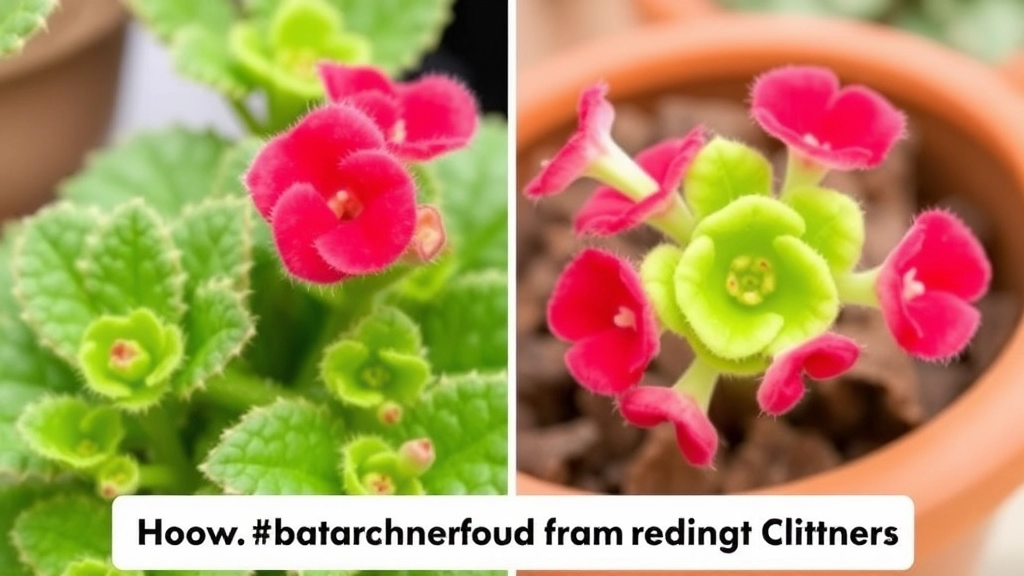
Are you wondering how to successfully propagate your Fuzzy Kalanchoe from stem cuttings?
This method is not only straightforward but also highly effective, making it a popular choice among plant enthusiasts.
Why Choose Stem Cuttings?
- Simplicity: This method requires minimal effort and tools.
- Quick Results: You can see new growth in just a few weeks.
- Healthy Plants: Stem cuttings often produce robust new plants.
Steps to Propagate Fuzzy Kalanchoe from Stem Cuttings
- Select Healthy Stems:
- Look for stems that are firm and free from disease.
- Choose stems that are at least 3-4 inches long.
- Make the Cut:
- Use clean, sharp scissors or pruning shears.
- Cut just below a leaf node to encourage root growth.
- Allow to Callus:
- Place the cuttings in a dry, warm location for 1-2 days.
- This helps form a protective layer over the cut, reducing the risk of rot.
- Prepare the Potting Mix:
- Use a well-draining soil mix, ideally one formulated for succulents.
- You can also mix regular potting soil with sand or perlite.
- Plant the Cuttings:
- Insert the cut end of the stem into the soil, burying it about an inch deep.
- Space multiple cuttings at least a few inches apart.
- Water Sparingly:
- Lightly mist the soil to moisten it without soaking.
- Avoid overwatering, as this can lead to rot.
- Provide Ideal Conditions:
- Place the pot in a bright location with indirect sunlight.
- Maintain a temperature range of 20-25°C (68-77°F).
Monitoring Progress
- Check for new growth in a few weeks.
- Once roots establish, you can gradually increase watering.
Step-by-Step Guide to Propagating from Offsets
Are you looking to expand your collection of Fuzzy Kalanchoe? Propagating from offsets is a straightforward and effective method that can yield beautiful results. Offsets, or “pups,” are small plants that grow from the base of the parent plant, making them ideal for propagation.
How to Propagate Using Leaves
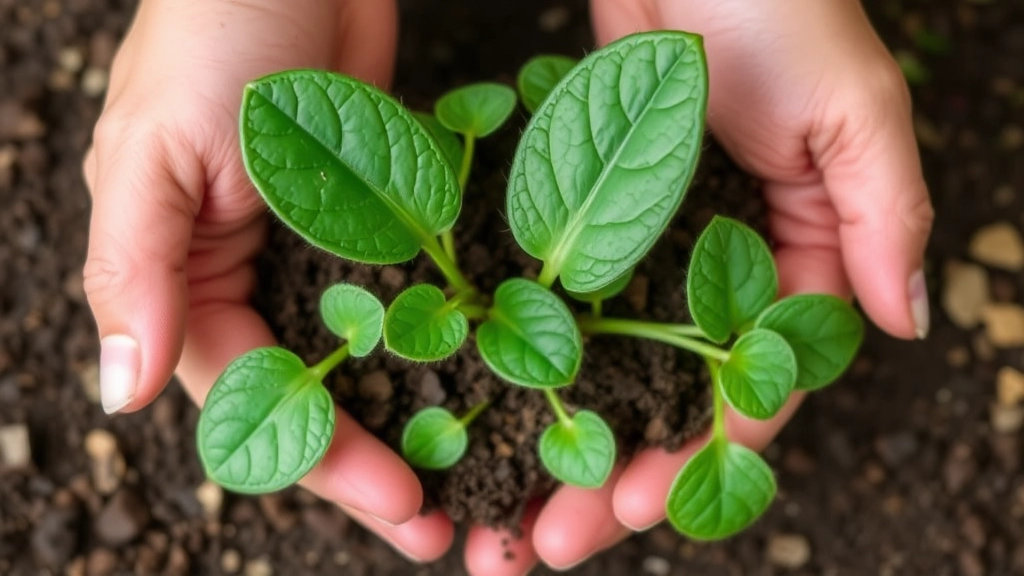
So, you’ve got your fuzzy Kalanchoe and you’re keen to propagate it using leaves? Great choice! This method is not only simple but also quite rewarding.
Why Choose Leaf Propagation?
You might be wondering why leaf propagation is a good option. Well, it’s an excellent way to multiply your plant without needing to cut off stems or offsets. Plus, it’s a fantastic way to utilise those healthy leaves that might otherwise go to waste.
Steps for Leaf Propagation:
- Select Healthy Leaves
– Look for plump, healthy leaves on your Kalanchoe.
– Avoid any that show signs of damage or disease. - Prepare the Leaves
– Gently twist or cut the leaves from the stem.
– Make sure to leave a small part of the leaf stem attached. - Let Them Callus
– Place the leaves on a dry surface for a day or two.
– This allows the cut ends to callus over, which helps prevent rot when planted. - Choose Your Soil
– Use a well-draining potting mix.
– A mix designed for succulents works wonders. - Planting the Leaves
– Lay the leaves flat on the soil surface or insert them slightly into the soil.
– Space them out to give each leaf room to grow. - Water Sparingly
– Mist the soil lightly, ensuring it’s just damp and not soggy.
– Overwatering is a common mistake! - Provide Proper Conditions
– Place the pot in bright, indirect sunlight.
– Keep the temperature warm, ideally between 20-25°C (68-77°F).
What to Expect
After a few weeks, you should start seeing tiny roots developing from the cut ends of the leaves.
It’s an exciting moment!
As the leaves root, you’ll also notice little baby plants beginning to sprout.
Common Pitfalls to Avoid
- Overwatering: Too much moisture can lead to rot.
- Direct Sunlight: While Kalanchoe loves light, direct sun can scorch the leaves.
When it comes to propagating Fuzzy Kalanchoe, the right soil is essential for ensuring healthy growth and strong roots. You might wonder, “What type of soil should I use?” or “How can I ensure my cuttings thrive?” Let’s break it down.
Choosing the Right Soil Mix
– Well-Draining Soil:
– Kalanchoe thrives in soil that drains well to prevent root rot.
– A mix designed for succulents or cacti is ideal.
– Components of the Mix:
– Use a combination of potting soil, sand, and perlite.
– A typical ratio could be 2 parts potting soil, 1 part sand, and 1 part perlite.
– pH Levels:
– Aim for a slightly acidic to neutral pH (around 6.0 to 7.0).
– This promotes nutrient availability and root health.
Preparing the Soil
– Sterilisation:
– If you’re using garden soil, sterilise it to eliminate pests and diseases.
– You can do this by baking it in the oven at 180°C for about 30 minutes.
– Mixing:
– Combine your ingredients thoroughly to ensure an even distribution.
– This creates a balanced environment for your cuttings.
Container Choice
– Pots with Drainage Holes:
– Always choose pots that have drainage holes to prevent water accumulation.
– Terra cotta pots are a great option as they allow for air circulation.
Testing the Soil
– Moisture Retention:
– Before planting, check if the soil retains moisture without being soggy.
– A simple test is to squeeze a handful; it should hold shape but crumble easily.
For more detailed guidance on caring for your Kalanchoe, you might want to explore our [complete guide to Kalanchoe Synsepala Baker](https://planthq.org/complete-care-guide-for-kalanchoe-synsepala-baker/) and learn about [outdoor Kalanchoe care expert tips and best practices](https://planthq.org/outdoor-kalanchoe-care-expert-tips-and-best-practices/).
Post-Propagation Care: Light, Watering, and Temperature Tips
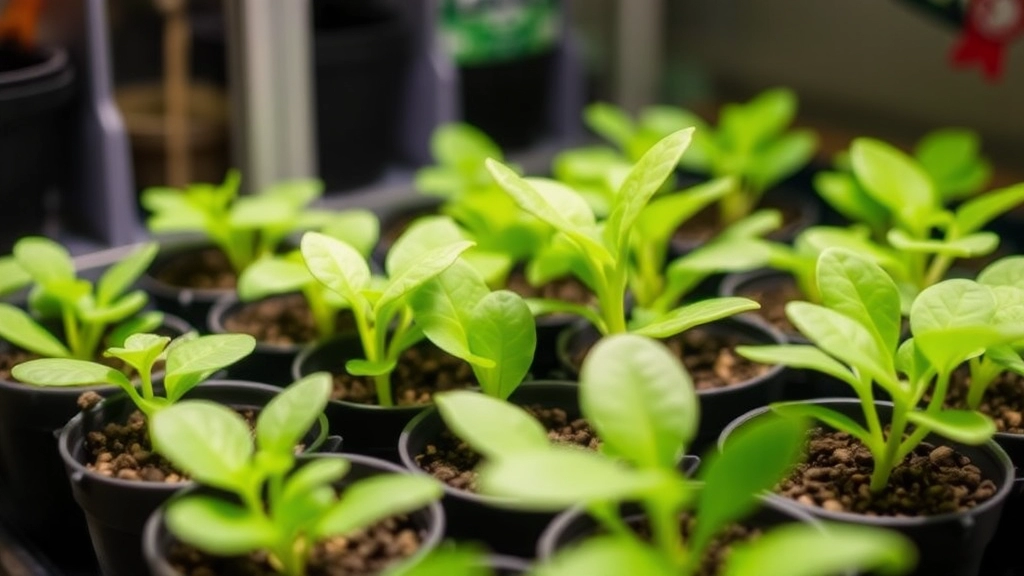
So, you’ve successfully propagated your Fuzzy Kalanchoe—congrats! Now, let’s talk about how to ensure those little cuttings and offsets thrive in their new homes.
Light Requirements
First up, light. This plant loves bright, indirect sunlight. Too much direct sun can scorch those delicate leaves, while too little can stunt growth.
- Ideal Position: Place your Kalanchoe near a window with filtered light.
- Rotate: Give it a little twist every week to ensure even light exposure.
Watering Wisely
Next, watering. This is where many plant parents trip up. Overwatering is a common mistake, especially when your plant is still establishing roots.
- Check the Soil: Stick your finger in the soil—if it’s dry an inch down, it’s time to water.
- Watering Method: Use a watering can with a narrow spout to deliver water directly to the soil, avoiding the leaves.
Temperature Considerations
Lastly, temperature. Fuzzy Kalanchoe prefers a warm environment, so keep it cozy.
- Optimal Range: Aim for around 20-25°C (68-77°F).
- Avoid Drafts: Keep it away from chilly windows or air conditioning vents.
By following these care tips, you’re setting your Fuzzy Kalanchoe up for success.
Common Challenges and How to Overcome Them
When propagating Fuzzy Kalanchoe, you may encounter a few common challenges that can hinder your success. Understanding these issues and knowing how to tackle them can make all the difference in your propagation journey.
1. Root Rot
One of the most frequent problems is root rot, which occurs when the plant’s roots are too wet.
- Solution:
- Ensure your cuttings or offsets are planted in well-draining soil.
- Allow the soil to dry out between watering.
- Use pots with drainage holes to prevent water accumulation.
2. Insufficient Light
Fuzzy Kalanchoe thrives in bright, indirect light. If your plants aren’t getting enough light, they may become leggy and weak.
- Solution:
- Place your cuttings in a location where they receive ample light.
- Consider using grow lights if natural light is limited.
3. Pest Infestations
Pests like aphids or mealybugs can be detrimental to your Kalanchoe.
- Solution:
- Regularly inspect your plants for signs of pests.
- Use insecticidal soap or neem oil for treatment.
4. Temperature Fluctuations
Fuzzy Kalanchoe prefers stable temperatures between 15°C and 24°C. Extreme temperature changes can stress the plants.
- Solution:
- Keep your plants in a consistent environment, away from drafts or heat sources.
5. Overwatering
Newly propagated plants are particularly vulnerable to overwatering, which can lead to various issues, including root rot.
- Solution:
- Water sparingly during the initial stages.
- Use a moisture meter to check soil moisture levels before watering.
By being aware of these common challenges and implementing the suggested solutions, you can enhance your chances of successfully propagating Fuzzy Kalanchoe. For more detailed propagation steps, you might find our step-by-step guide on Kalanchoe propagation helpful. Additionally, if you’re looking to ensure your plants thrive, consider our ultimate guide to growing and caring for Kalanchoe.
When and How to Transplant Newly Rooted Kalanchoe
So, you’ve successfully propagated your fuzzy Kalanchoe, and now you’re wondering when and how to transplant those little green wonders. It’s a common concernâafter all, you want to ensure they thrive in their new homes!
Timing is Everything
When should you transplant?
- Roots Established: Wait until your new Kalanchoe has a solid root system. You’ll know it’s ready when roots start peeking out of the drainage holes in the pot.
- Healthy Growth: Look for new leaves or growth. This is a good sign that your plant is ready for a bigger space.
- Seasonal Considerations: Spring is the best time to transplant. The warmer weather encourages growth and helps the plant settle into its new pot.
Choosing the Right Pot
What should you look for in a pot?
- Size Matters: Choose a pot that’s 1-2 inches larger in diameter than the current one. Too big can lead to overwatering issues.
- Drainage is Key: Make sure your new pot has drainage holes. Kalanchoes hate soggy roots!
The Transplanting Process
How to transplant your fuzzy Kalanchoe?
- Prepare the New Pot: Fill it with fresh, well-draining soil. A mix designed for succulents works wonders.
- Gently Remove the Plant: Carefully take your Kalanchoe out of its current pot. You can gently squeeze the sides of the pot to loosen it if needed.
- Inspect the Roots: Check for any damaged or rotten roots. Trim them away with clean scissors.
- Position the Plant: Place your Kalanchoe in the centre of the new pot. Make sure the top of the root ball is level with the soil surface.
- Fill with Soil: Add more soil around the sides, gently pressing down to eliminate air pockets.
- Water Sparingly: Give it a light watering, but don’t drown itâremember, Kalanchoes prefer a bit of dryness!
Post-Transplant Care
What’s next after transplanting?
- Light: Place your newly potted Kalanchoe in a spot with bright, indirect sunlight.
- Watering: Wait a week before watering again to help the plant adjust.
- Temperature: Keep it in a warm area, avoiding drafts or sudden temperature changes.
Transplanting can feel daunting, but with these simple steps, you’ll set your fuzzy Kalanchoe up for success in its new home. For more detailed guidance, check out our Complete Care Guide for Kalanchoe Blossfeldiana and learn how to Propagate Kalanchoe Tomentosa effectively.
FAQs on Fuzzy Kalanchoe Propagation
What are the best varieties of Kalanchoe for propagation?
Some popular varieties include:
- Kalanchoe tomentosa: Known for its soft, velvety leaves.
- Kalanchoe blossfeldiana: Features stunning flowers.
- Kalanchoe luciae: Also known as the paddle plant, with thick, striking leaves.
Why choose stem cuttings for propagating Fuzzy Kalanchoe?
Stem cuttings are a popular choice because they are:
- Simple: Minimal effort and tools are required.
- Quick: New growth can appear in just a few weeks.
- Healthy: Often results in robust new plants.
What are the steps to propagate Fuzzy Kalanchoe from stem cuttings?
The steps include:
- Select healthy stems that are firm and disease-free.
- Cut just below a leaf node using clean, sharp scissors.
- Allow the cuttings to callus for 1-2 days.
- Prepare a well-draining potting mix.
- Plant the cuttings about an inch deep in the soil.
- Water sparingly to avoid rot.
- Provide bright, indirect sunlight and maintain temperatures between 20-25°C (68-77°F).
Can I propagate Fuzzy Kalanchoe using leaves?
Yes, leaf propagation is a simple and rewarding method. It allows you to multiply your plant without cutting off stems or offsets.
What are the steps for leaf propagation?
The steps include:
- Select healthy, plump leaves.
- Gently twist or cut the leaves from the stem.
- Let the leaves callus for a day or two.
- Use a well-draining potting mix.
- Lay the leaves flat on the soil or insert them slightly.
- Mist the soil lightly.
- Provide bright, indirect sunlight and keep the temperature between 20-25°C (68-77°F).
What should I expect during leaf propagation?
After a few weeks, you should see tiny roots developing from the cut ends of the leaves, followed by little baby plants sprouting.
What are common pitfalls to avoid during propagation?
- Overwatering: Can lead to rot.
- Direct Sunlight: Can scorch the leaves.
How do I care for my Fuzzy Kalanchoe post-propagation?
Follow these tips:
Light Requirements
Place your Kalanchoe near a window with bright, indirect sunlight and rotate weekly for even light exposure.
Watering Wisely
Check the soil moisture by sticking your finger an inch deep. Water only when the soil is dry at that depth and use a narrow-spout watering can to avoid wetting the leaves.
Temperature Considerations
Maintain a warm environment, ideally between 20-25°C (68-77°F), and avoid placing the plant near drafts or air conditioning vents.
By following these guidelines, your Fuzzy Kalanchoe will thrive and flourish.
References
-
The Spruce: Growing Kalanchoe Succulents
-
Gardening Know How: Kalanchoe Plant Propagation
-
Gardener’s World: How to Grow Kalanchoe
